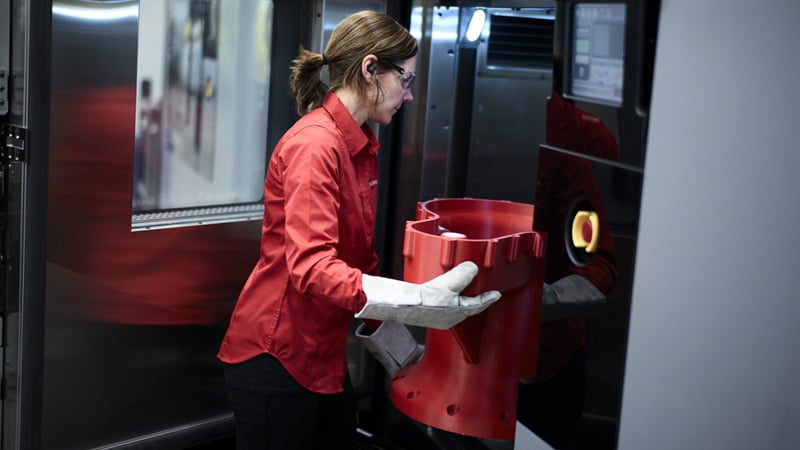Industrial 3D Printing: Innovative Manufacturing and Paradigm Shift
-
By
Marie-Christine Flibotte
July 14 2023
-
Tech tips and tutorials

The integration of industrial 3D printing within a company certainly transforms business processes, in terms of manufacturing and production, but also at the supply chain level. Let’s take a closer look at the changes this technology is bringing to the industrial world, and how your business can benefit from adopting it.
Industrial 3D Printing: A New Way to Organize Manufacturing
Industrial 3D printing is changing the way we approach production. These new processes bring about positive changes which, added together, make them a real revolution.
Production on Demand
By making “on-demand” manufacturing a very real possibility, the integration of industrial 3D printing into the value chain is transforming the world of manufacturing. It is the simplicity and the speed of production that make it possible to produce parts according to the needs in quantity and time.
Production Customization
With industrial 3D printing, it is possible to customize the final product practically without considering shape, complexity or size. Many iterations are possible and can be done very quickly and easily. Since industrial 3D printing makes it possible to produce batches of unique parts according to precise characteristics, it gives operations the advantage of being closer to customers and thus fulfilling their demands.
Supply Chain Simplification
Since industrial 3D printing makes it possible to produce parts on demand and that no mould is required, it reduces time and costs for manufacturing low-volume parts. Another advantage of industrial 3D printing is the possibility of combining several parts into one. Indeed, this significantly reduces the number of suppliers required, the number of tooling, and therefore the number of production and assembly steps.
Inventory Management Optimization
By producing parts directly from CAD files, industrial 3D printing converts traditional inventory into digital inventory. This way, businesses can reduce capital tied up in slow-moving parts and free up working capital kept in inventory.
In the case of obsolete parts to be replaced, the oldest ones can be simply printed on demand. Industrial 3D printing optimizes the management of obsolescent products, since no storage of parts or tooling is required.
Ecological Footprint Reduction
Unlike subtractive manufacturing processes where a large block of material is used, from which material is removed, industrial 3D printing is an additive process, that means we add thin layers of material, one by one to manufacture the part. This way, less waste is produced, since the parts are geometrically optimized, thanks to their pre-assembled configurations.
Industrial 3D printing already has a positive impact on the environment, as the manufacturing process itself is simple and involves few steps. But also, because the components produced are lighter. For example, by opting for a “honeycomb” filling or by replacing metal parts with high-performance thermoplastic parts. These capabilities offered by industrial 3D printing help reduce energy consumption and therefore reduce the emissions of certain industries.

Industrial 3D Printing: A Way to Expand Collaborative Development
Manufacturing Democratization
The ease of production and the "on-demand" manufacturing method make this technology accessible to everyone. This wide accessibility accelerates innovation and revolutionizes the material world. It is possible to test new products much more quickly and easily, and therefore, create innovative products in a short time.
Unleashing Creativity
Just as the transition to digital and the democratization of the Internet have brought greater collaboration between individuals, with the storage of parts on computers, industrial 3D printing becomes a platform that allows different people to have their say in the development of the product. When an idea can be modified directly on a computer, any contribution within the value chain can be tested in little time and at little cost. We are then witnessing a real revolution in terms of development and economic growth potential.
Industrial 3D Printing: What Is to Come?
Industrial 3D printing has transformed and continues to transform business models in manufacturing. As with the digital shift, industrial 3D printing has changed the way industrial production is viewed.
Industrial 3D printing fits perfectly into the changes in business processes, which must now integrate new practices to act on greenhouse gas emissions while maintaining advances that improve the quality of life. Companies that integrate industrial 3D printing at a high level know how to leverage its potential to develop and select innovative solutions. They are also a catalyst for innovation in the product development.
Would you like to have more information on integrating a 3D printing service into your production process? Contact us, our industrial 3D printing experts will be happy to help you.


